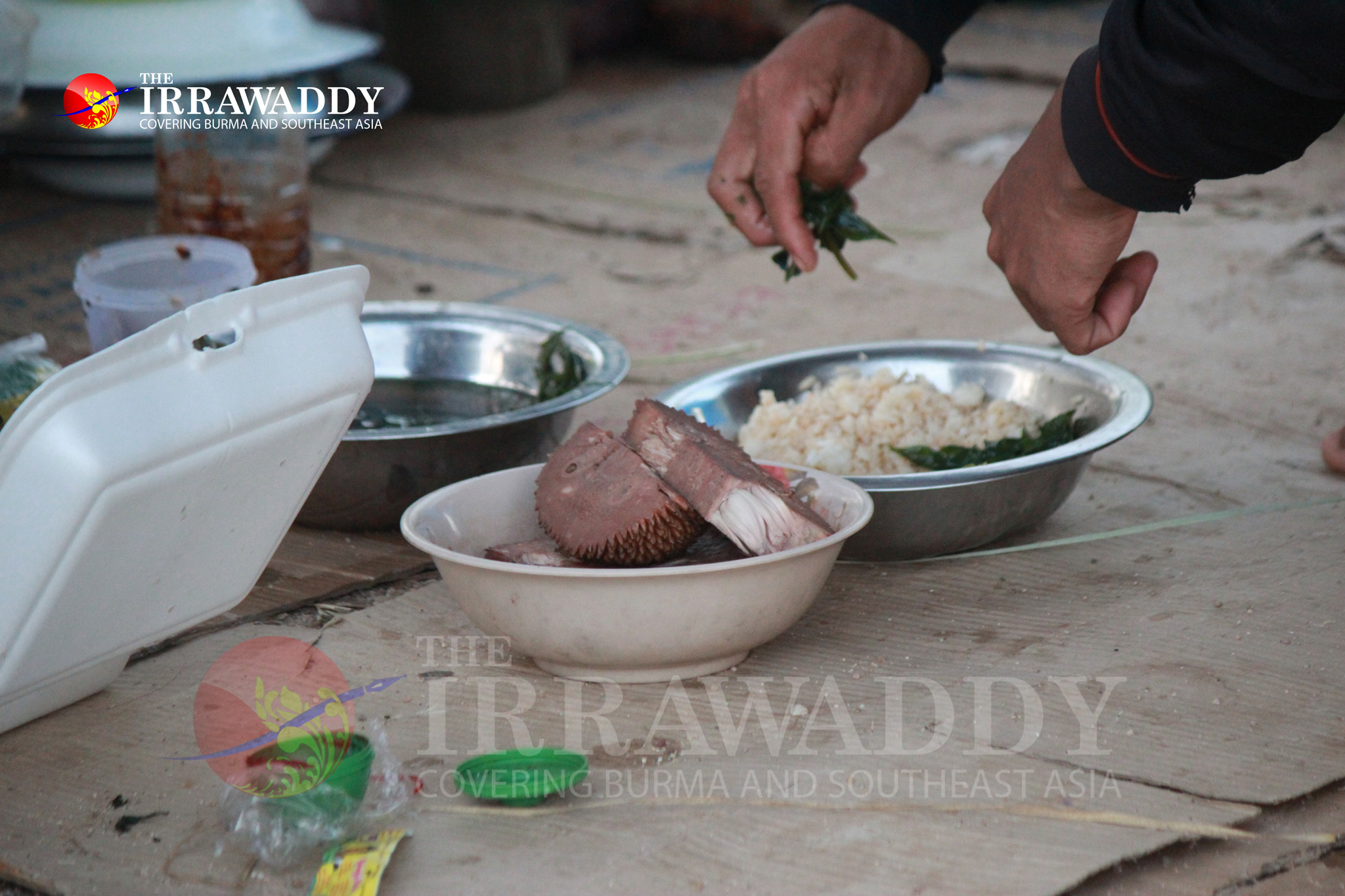With their meager belongings, ethnic Karen internally displaced people who fled fighting in Karen State’s Myawaddy live in makeshift huts on the silty soil that lines the bank of the Moei River, which marks the Myanmar-Thailand border. It has been nearly a month since they had to leave their homes to avoid being hit by the bullets, artillery shells and bombs fired at and dropped on them by Myanmar junta troops and aircraft.
Some 20,000 locals in Lay Kay Kaw new town and surrounding areas in Karen State’s Myawaddy Township have been displaced by fighting between the Myanmar military and the combined forces of the Karen National Liberation Army and the People’s Defense Force since mid-December. The fighting erupted after the junta forces conducted raids in the town, alleging that democracy activists and striking civil servants were sheltering in the area, and arresting dozens of them.

Since Dec. 15, a few thousand people have sought refuge over the Thai border, where the Thai government and volunteers help them with food, shelter and medicine. At least these refugees have some shelter, however inadequate, in large cow barns in Thailand’s Mae Sot and Phop Phra districts.


Some tried returning to their homes during breaks in the fighting, but many ended up being displaced again along the border on the Myanmar side.


“We went back to our home in Palu Village a few days ago, but only stayed for one night. We had to flee as the shooting was near our home. We have five children and we took only our children,” a member of an IDP family told The Irrawaddy in the first week of January.

There are thousands of IDPs living on the bank of the Moei River on the Myanmar side. Some use tarpaulins as makeshift huts and mats, while others live on mats on the ground.

They rely on donated food and clean drinking water provided by Myanmar migrant workers in Thailand and Thai well-wishers. Migrant workers on the Thai side cook between 2,000 and 3,000 meals for lunch and again for dinner every day using donations from well-wishers, and distribute them on a daily basis, according to relief workers.


The IDPs near the Thailand-Myanmar border are among the many displaced people across Myanmar who have borne the greatest burden in areas where armed resistance against the military junta is growing, most notably in Kayah and Chin states and Sagaing and Magwe regions. The Irrawaddy recently captured in images the situation facing the IDPs on the border.


Almost a year after the Feb. 1, 2021 coup, an estimated 300,000 IDPs have been forced to flee their homes across the country, according to UNOCHA, the UN’s humanitarian affairs agency. UNOCHA estimates 3 million people across Myanmar are in need of humanitarian support. The overall situation across the country has deteriorated since the military coup, resulting in a lack of security for civilians.

















